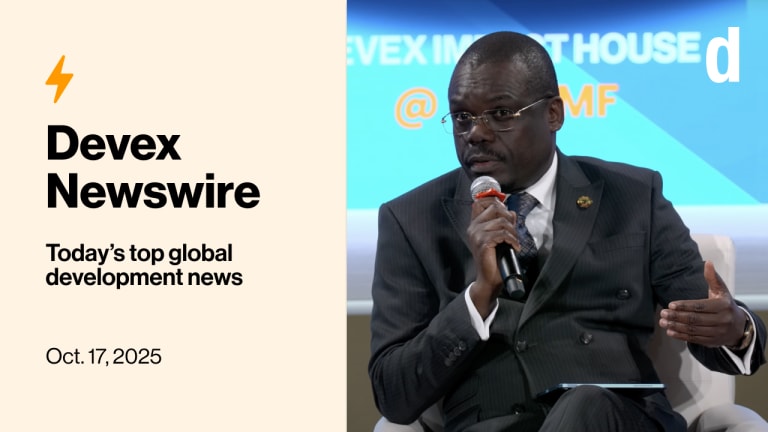As global aid budgets tighten and the cost of climate disasters rises, development finance leaders are increasingly looking to tools that can protect vulnerable communities before crises strike.
Across Africa, regional banks and insurers are developing new financial models that merge credit, insurance, and local capital to build resilience in cost-effective ways.
That shift was the focus of a conversation between Serge Ekué, president of the West African Development Bank, and Hope Murera, CEO of reinsurer Zep-Re, at Devex Impact House during the World Bank and IMF Annual Meetings in Washington, D.C.
Printing articles to share with others is a breach of our terms and conditions and copyright policy. Please use the sharing options on the left side of the article. Devex Pro members may share up to 10 articles per month using the Pro share tool ( ).








